The AK-74 in Ukraine: A History & More
July 5th, 2022
6 minute read
The war in Ukraine is unique in modern times. For me, not since World War II has the delineation between the “good guys” and the “bad” been more stark. Volodymyr Zelensky’s call for foreign volunteers to help repel the Russian invaders gave warriors from other nations the opportunity to strike a blow. More than 20,000 troops answered the call.
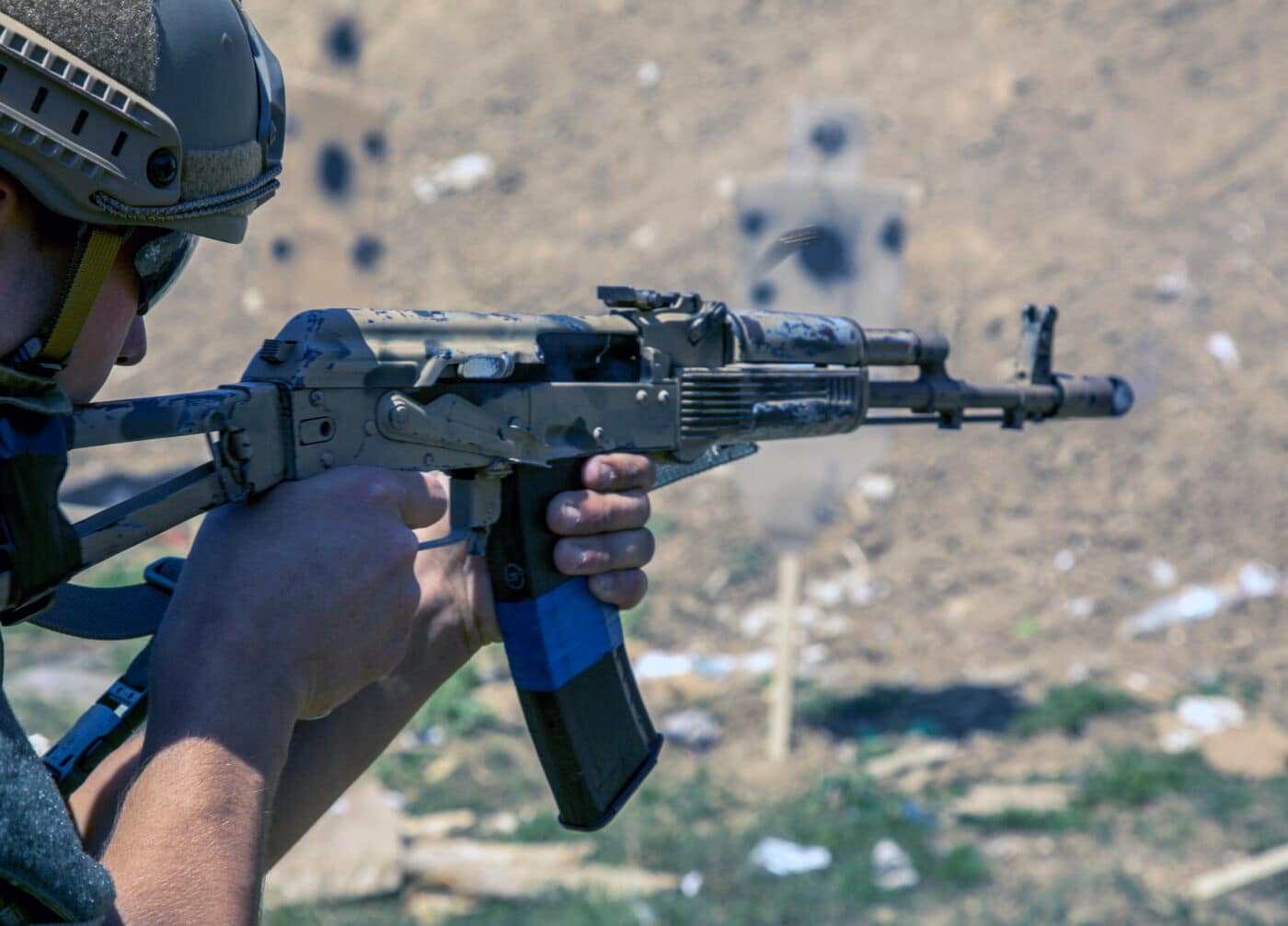
Now that the West has gotten tooled up in its support, Ukraine is a melting pot of weapons. Small arms from all over Europe and the U.S. can be seen in news footage. Most of the weapons used by Ukrainian-aligned fighters, however, are still AK-74 variants.
The Kalashnikov assault rifle is one of the most significant mechanical contrivances ever devised by man. This radically reliable combat tool designed by a Russian soldier went on to shape the geopolitical affairs of humanity in ways no one might have imagined back in 1949 when it first saw service. Since then, the Kalashnikov has undergone a variety of upgrades.
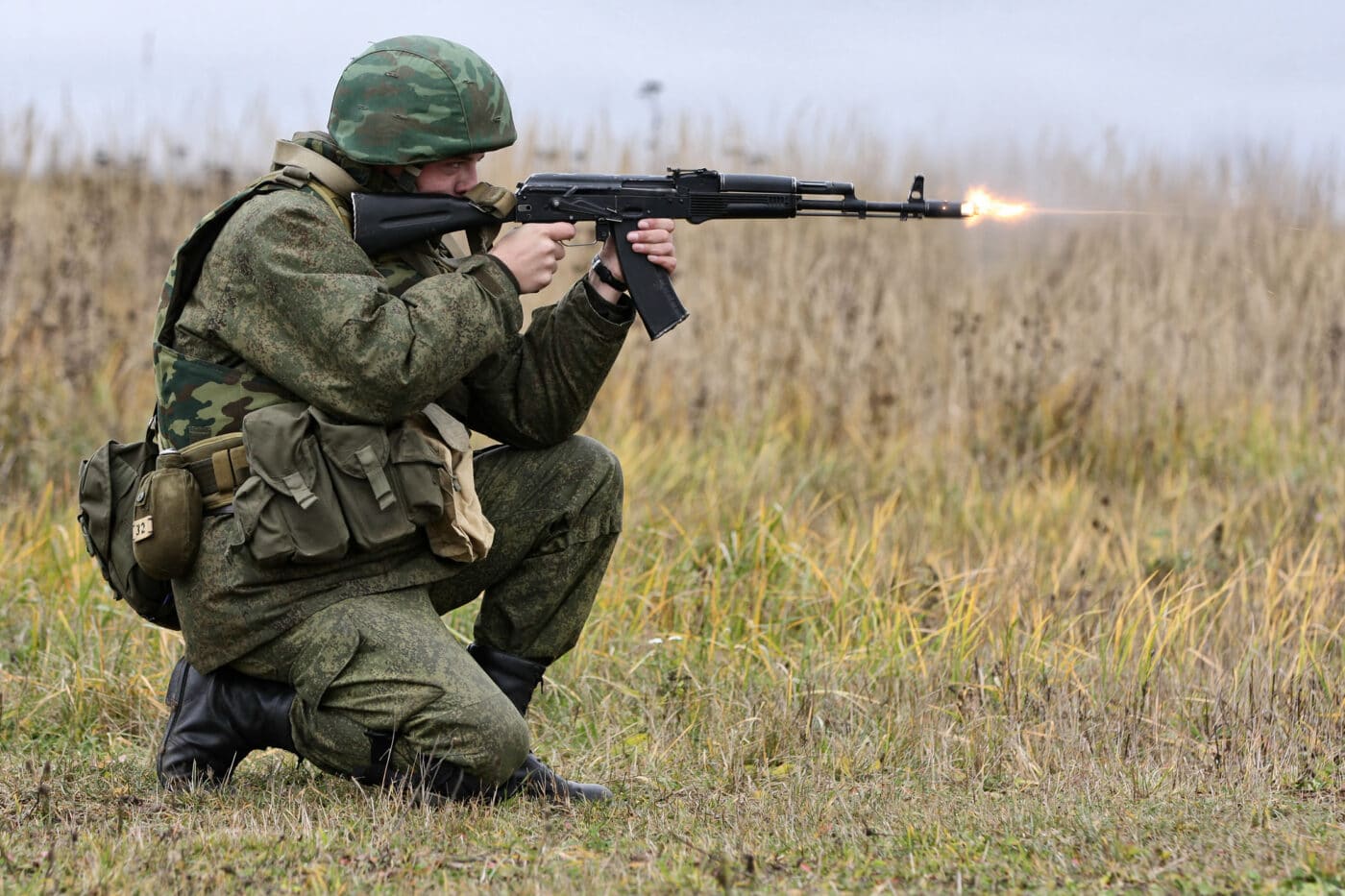
The first transformation took place in 1959 when the milled receiver 7.62x39mm AK-47 (which replaced a first, ultimately unsuccessful attempt at a stamped-receiver version) was supplanted by the exceedingly successful stamped-receiver AKM. That rifle went on to become the most-produced firearm in human history. It is simply ubiquitous.
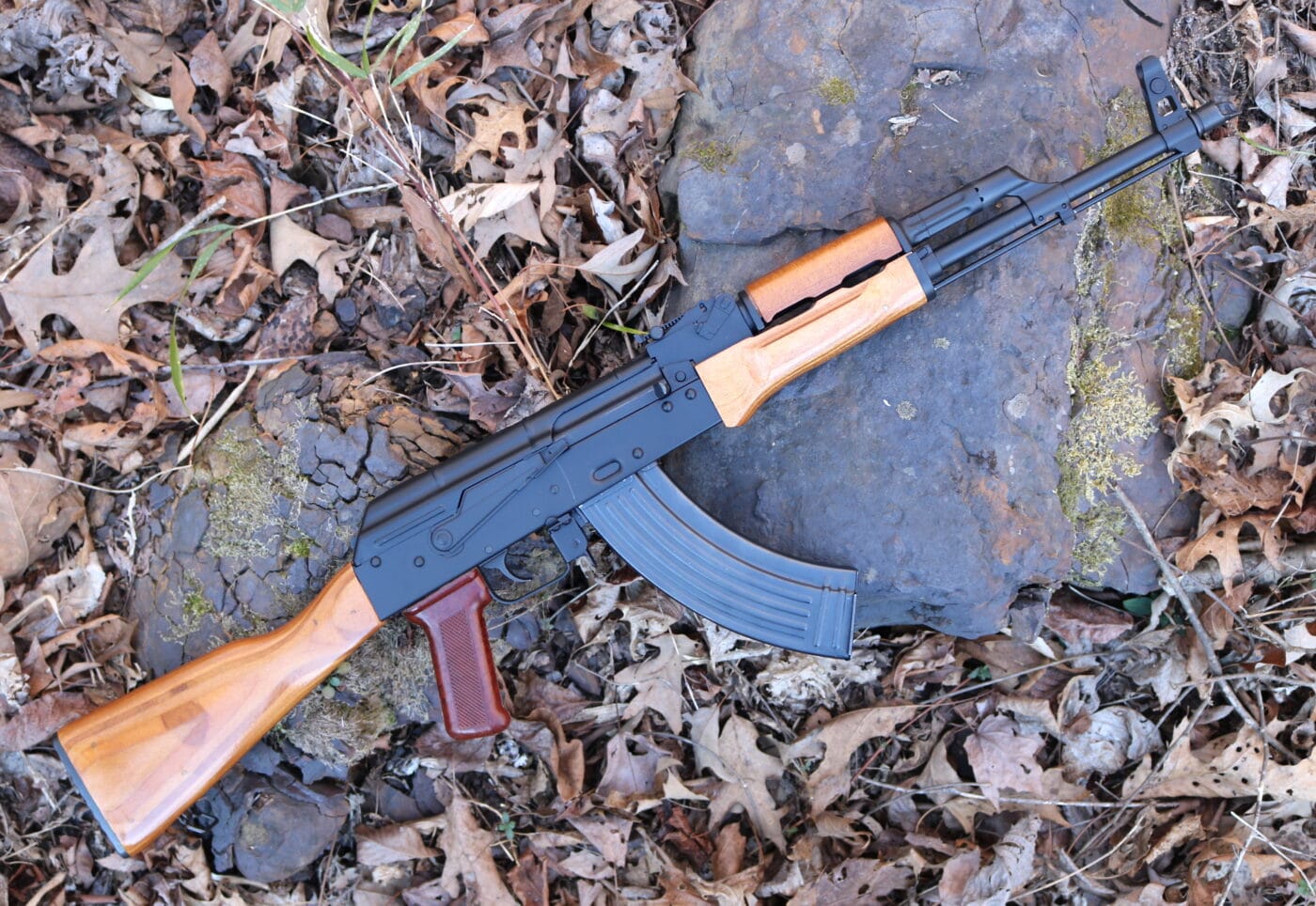
In the mid-1960’s, the U.S. Army transitioned from the 7.62x51mm M14 (to learn more about the service life of the M14, click here) to the 5.56x45mm M16 (to learn more about the story of the M16, click here). The switch to a lightweight, high-velocity cartridge allowed troops to carry more ammo and offered increased firepower over the previous heavier, bulkier weapons. Throughout the war in Vietnam, the Soviets watched and schemed.
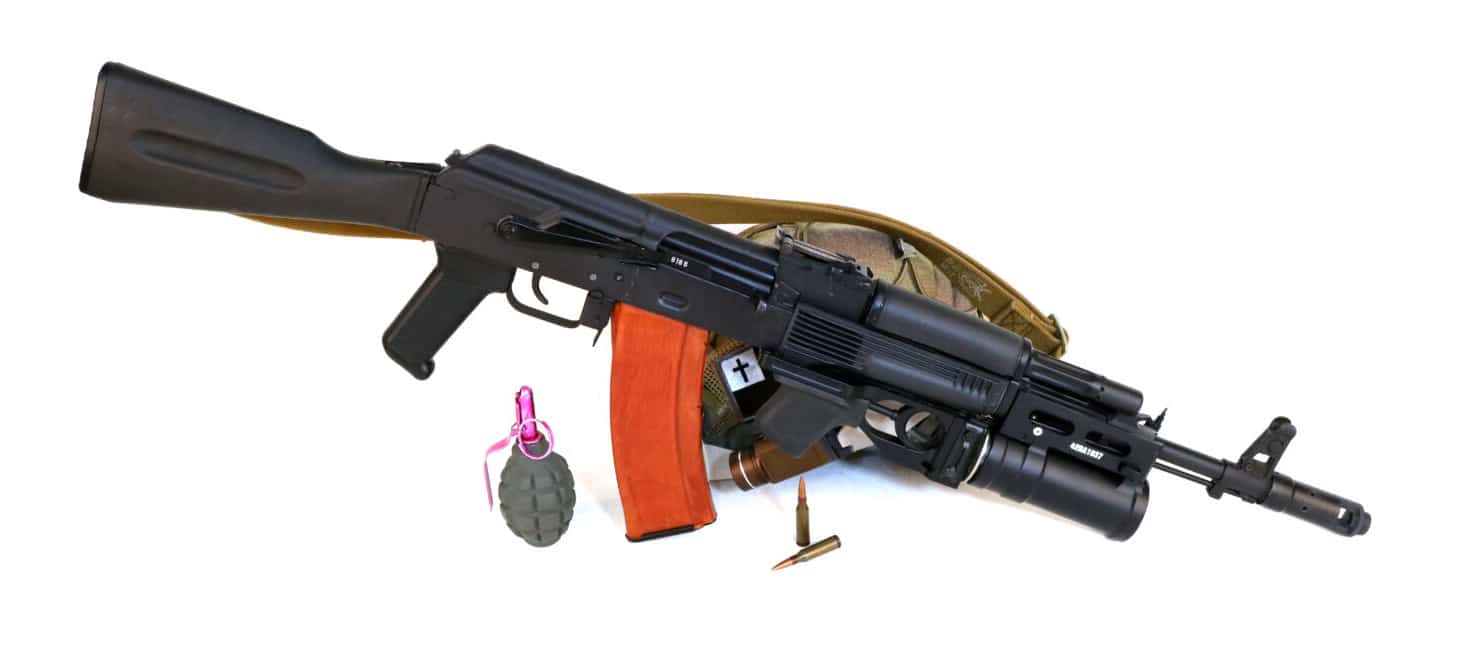
First introduced into series production in 1976, the upgraded AK-74 orbited around an entirely new cartridge. The AK-74’s radical new M74 5.45x39mm round was a rimless bottlenecked design that incorporated a variety of novel features.
The original 7N6 5.45x39mm cartridge propelled a long boat-tail 52.9-gr. bullet to around 2,900 feet per second out of a standard AK-74 barrel. The bullet included a 22.1-gr. mild steel penetrator encased within a jacket made from gilding metal. Gilding metal is a unique type of brass with a markedly larger percentage of copper than zinc when compared to more typical brass alloys. Most commonly this ratio runs about eight to one.
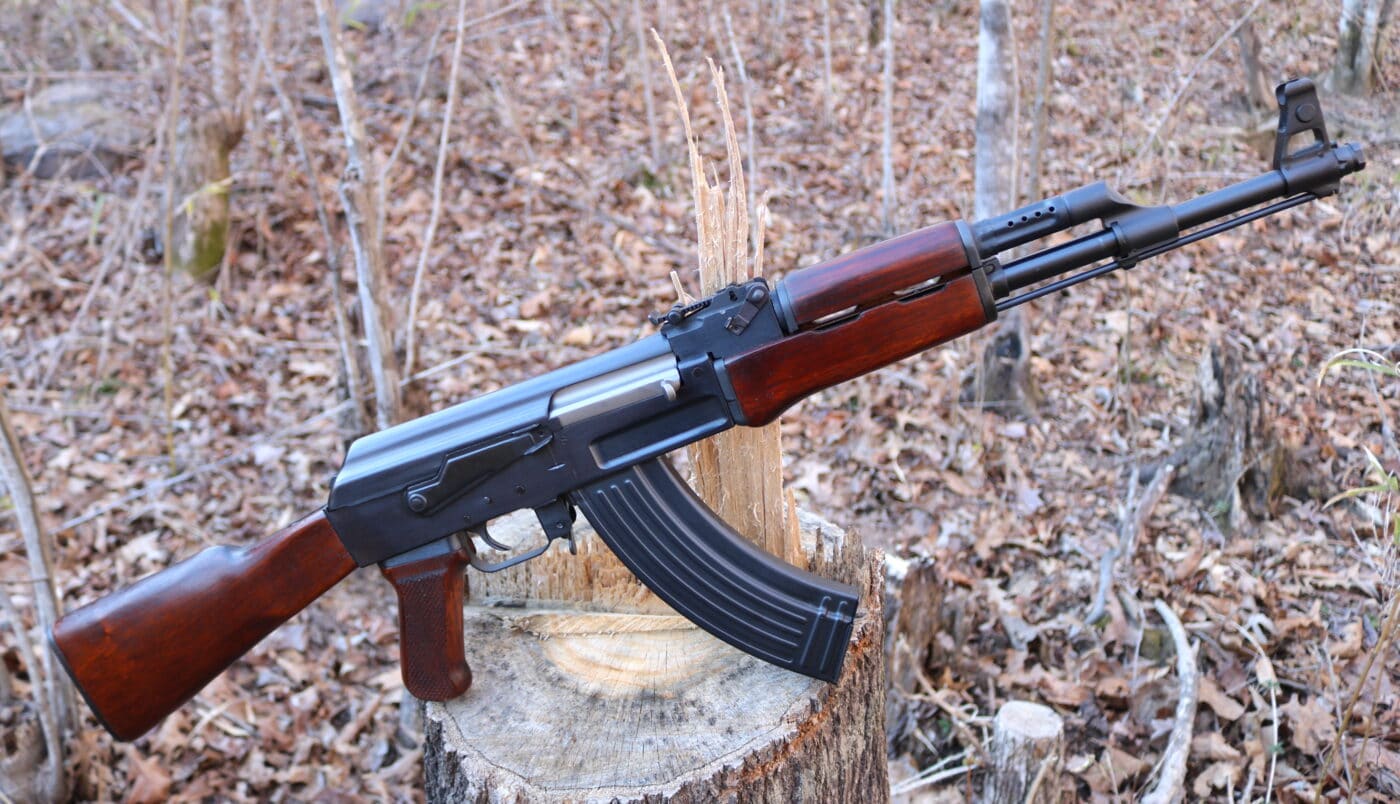
A lead insert filled out the projectile, but the manufacturing process typically left a small air pocket in the nose. This moved the center of gravity to the rear and ensured a tendency for the round to tumble violently upon contact with something soft and squishy. The Berdan-primed steel cases were finished with a brown lacquer.
The recoil energy of the 7N6 5.45x39mm round was 3.39 Joules. The American M193 5.56x45mm round produced 6.44 Joules. That of the Combloc M43 7.62x39mm cartridge was 7.19 Joules. The end result is exceptionally controllable.
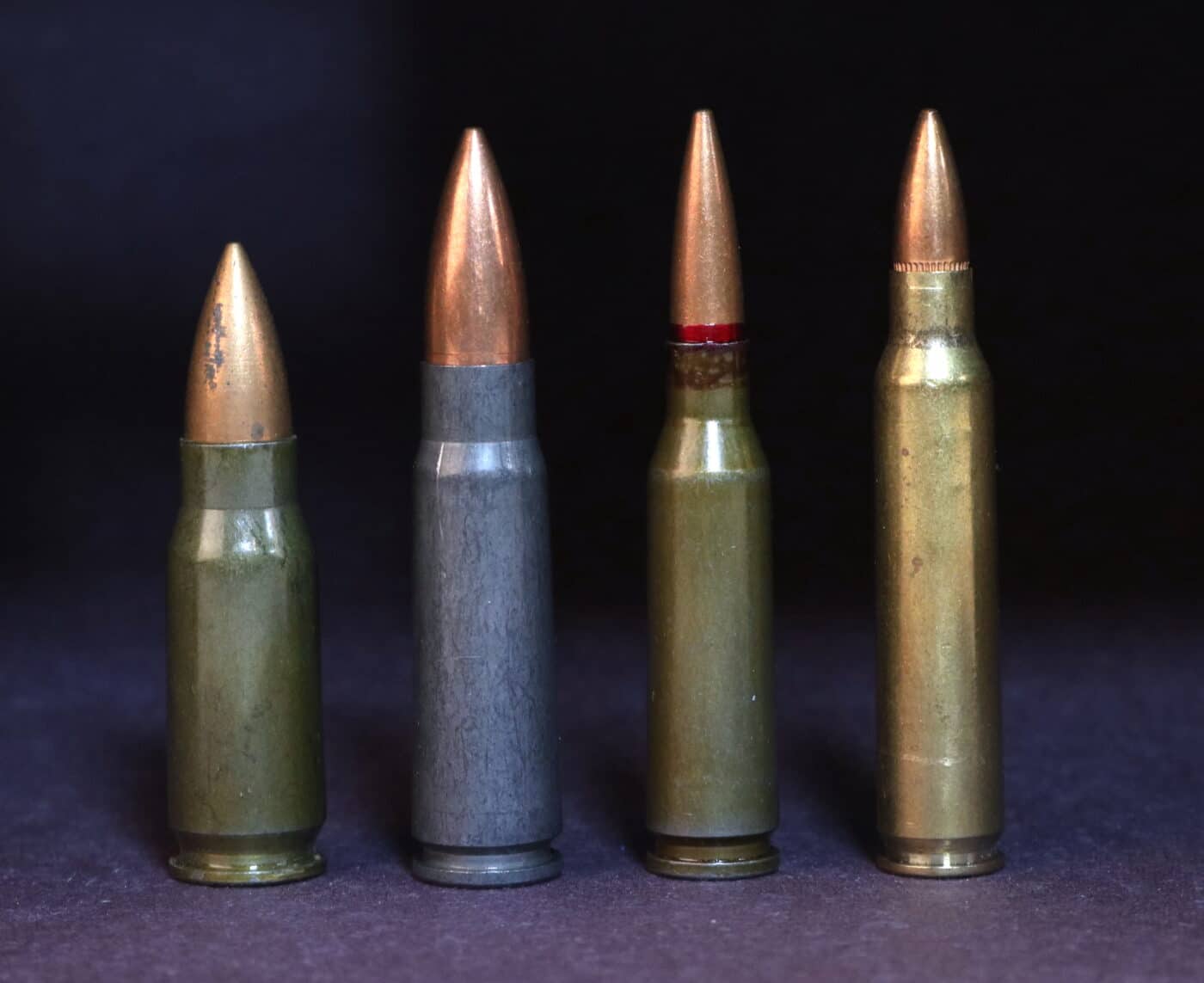
The AK-74
The Soviets designed a family of weapons around their new 5.45x39mm round. The AKS-74U fills the submachine gun role, while the RPK-74 is used as a squad-level light machine gun. Today, the most common AK-74 infantry rifle is the AK-74M.
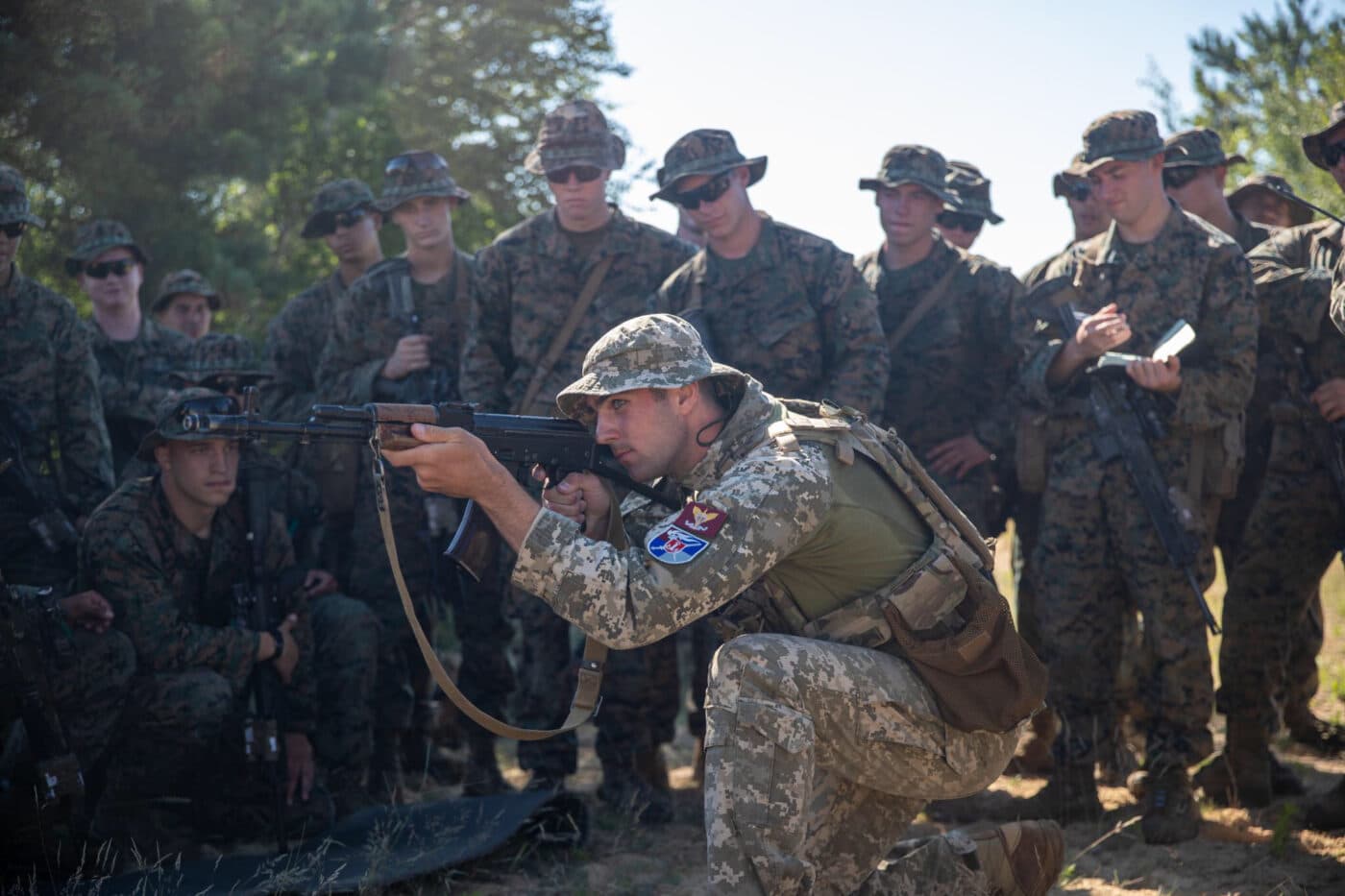
Introduced in 1991, the AK-74M includes a side-folding polymer buttstock and black synthetic furniture. About half of the parts of the AK-74M are compatible with the previous AKM. Both rifles utilize the same uber-reliable long-stroke, gas piston-driven action.
The chromed-bore barrel of the AK-74M is 16.3″ long with a 1-in-7.87″ twist rate. Both the front sight base and gas block were redesigned over the previous AK. Most AK-74 gas blocks now meet the barrel at a right angle, where the previous AKM version was rakishly swept back. The gas block includes a lug that will accommodate either a bayonet or the removable GP-25 under-barrel muzzle-loading 40mm grenade launcher. Original rifle magazines hold 30 rounds and are formed in two halves cemented together with epoxy resin. Subsequent versions were molded from ABS plastic.
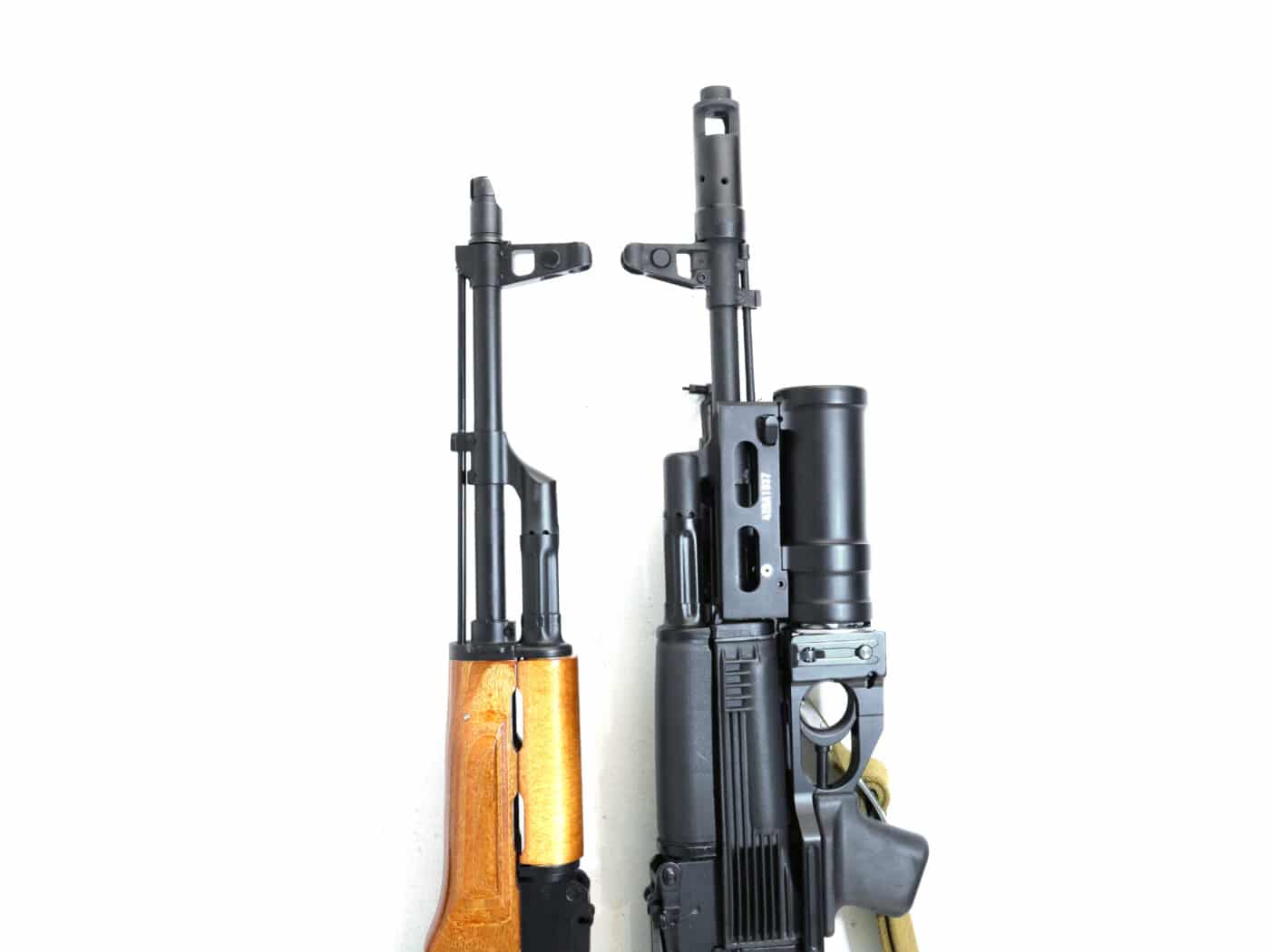
Where previous Kalashnikov rifles had a threaded muzzle, the front sight base of the AK-74M has a sleeved extension over the muzzle end of the barrel that is threaded to accept a muzzle attachment. The AK-74M’s complex muzzle brake includes an expansion chamber, two vertical cuts at the muzzle end and three offset vent holes to help counteract the tendency of the rifle to climb up and to the right. There are two major types of AK-74 muzzle brakes in service. Only the geekiest of gun nerds can tell them apart. It is a superb design.
Range Time
The manual of arms is timeless Kalashnikov. The charging handle reciprocates rigidly with the bolt. Magazines must be hooked in front and rocked back to seat. The resulting leverage allows a full a magazine to be loaded easily with the bolt closed.
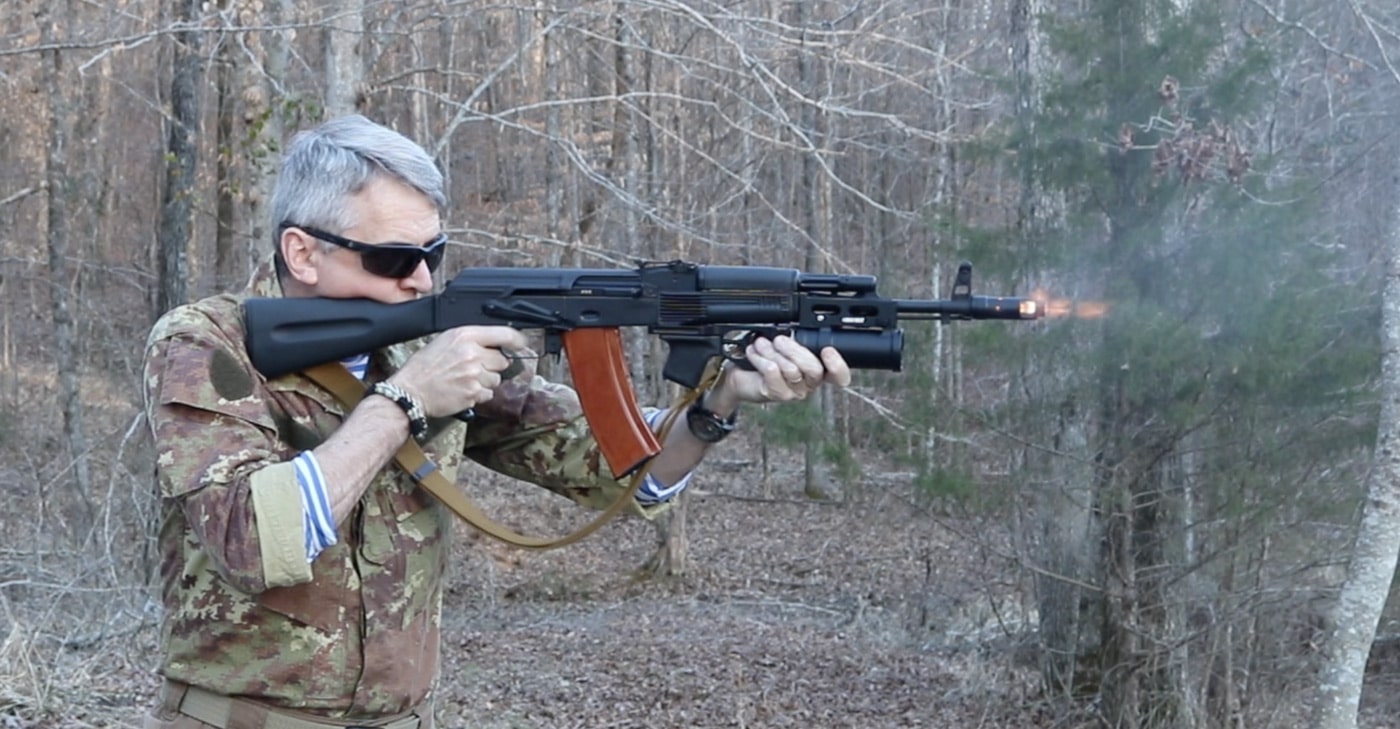
The right-sided fire selector is clunky but effective. Up is safe, and down is semi. The middle position is rock and roll. Just reading these two paragraphs will tell you everything you need to know to get the gun into action.
Recoil on the AK-74M is not a real thing, and the rifle is great fun on the range. In the hands of Ukrainian fighters, it is exacting a terrible butcher’s bill among invading Russian forces. Lightweight, effective, and utterly reliable, the AK-74M will no doubt figure prominently in the world’s conflicts for decades to come.
AK-74 FAQ
Here are the answers to some frequently asked questions about the AK-74 rifle.
What Is an AK-74?
The AK-74 is an assault rifle designed by the former Soviet Union. It first entered production in 1976 as an evolution of the AK-47 platform.
What Does the AK-74 Shoot?
The AK-74 is chambered for the 5.45×39 cartridge. The original 7N6 load used a 52.9-grain boattail bullet with a muzzle velocity of about 2,900 fps. Inside the bullet was a 22.1-grain mild steel penetrator.
Who Made the AK-74
Originally, the Soviet Union (USSR) designed and manufactured the AK-74. Since that time, manufacturing expanded to other Communist Bloc countries.
Editor’s Note: Please be sure to check out The Armory Life Forum, where you can comment about our daily articles, as well as just talk guns and gear. Click the “Go To Forum Thread” link below to jump in and discuss this article and much more!
Join the Discussion
Continue Reading
Did you enjoy this article?

 381
381






